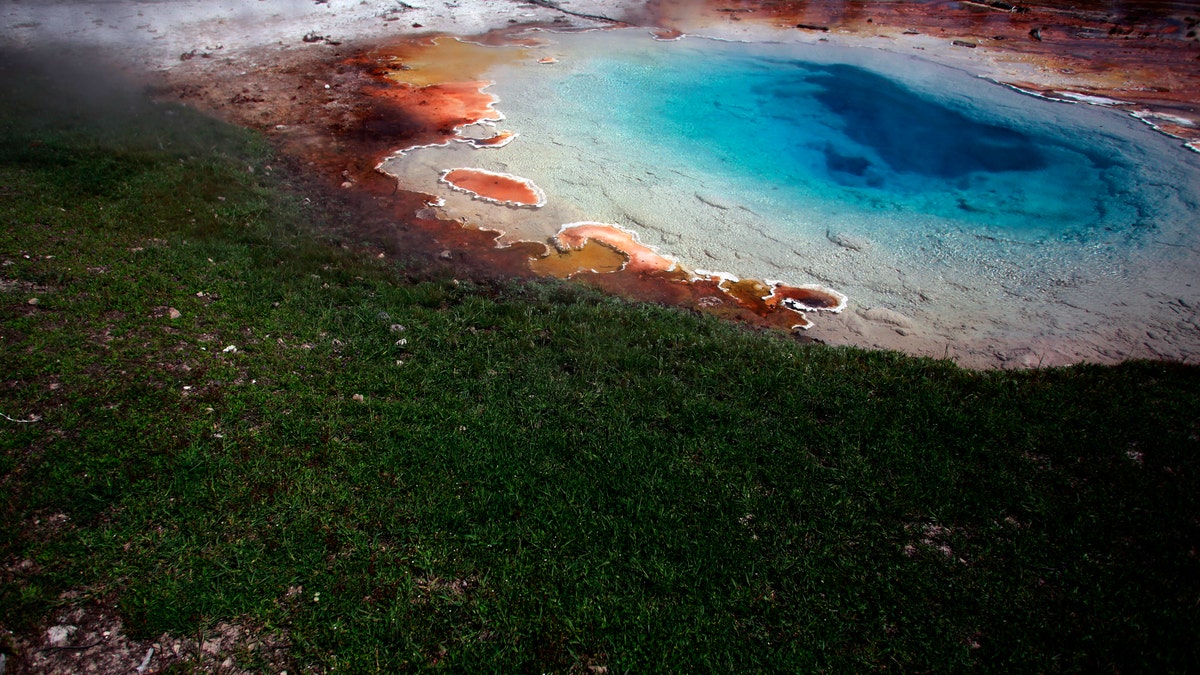
File photo: The Silex Spring in the Fountain Paint Pot area in Yellowstone National Park, Wyoming, June 21, 2011. (REUTERS/Jim Urquhart)
Steamboat Geyser’s been busy.
It’s the biggest, most powerful natural geyser in the world.
The Yellowstone National Park natural wonder can shoot jets of hot water as high as 90 meters into the air. It’s done so three times in the past six weeks. Prior to that, it hadn’t erupted since 2014.
But scientists are saying sit back — and enjoy.
They don’t know what’s causing the unusual space of activity, but are certain it’s not a sign that the supervolcano beneath Wyoming is waking up.
Yellowstone sits on top of a vast crater, and an enormous upwelling of magma from the Earth’s core.
Its incredible natural beauty is a direct result of its destructive past. The multi-coloured springs, thermal ponds and geysers are driven by an extensive underground hydrothermal network — powered by the magma below.
“There is nothing to indicate that any sort of volcanic eruption is imminent,” the US Geological Survey’s Yellowstone Volcano Observatory head Michael Poland told Reuters.
Steamboat has blown three times in rapid succession before. That was in 2003.
Unlike Old Faithful, a tourist attraction of international renown because of its frequent eruptions, most geysers follow no set schedule.
So, Steamboat’s blast of activity “might just reflect the randomness of geysers,” Poland says.
Geologists say it’s the opposite to frequently erupting geysers that should be cause for concern.
Magma making its way towards the surface would dry up the below-ground water reserves — leaving Steamboat, Old Faithful and other geysers powerless.
Recent studies indicate there are two vast, ‘stacked’ magma chambers hidden 9.5 kilometres beneath the park’s surface.
Here a complex, chaotic chemical process is underway. How these influence geological forces is what researchers want to find out.
A new computer model has been created to simulate these two chambers, temperatures, the local rocks and geography, as well as below-ground water reserves.
“What’s neat about their model is they can go back in time with it and see how it might have influenced eruption rates many millions of years ago,” Poland said earlier.
Yellowstone is one of the world’s oldest national parks, established in 1872. It wasn’t until the 1960s that it was realised the 70km-wide natural basin was an old volcano caldera. It was only in the 1980s that it was discovered that it was still alive.
Since then, geologists have been striving to understand the forces that drive it.
If Yellowstone was to blow, it would have planet-wide fallout.
Ash would fall over almost all the United States. Lava flows could cover half the country. The weather worldwide would be thrown into turmoil.
But it’s not likely to happen any time soon.
Nevertheless, scientists want to know how it works.
This story originally appeared in news.com.au.
